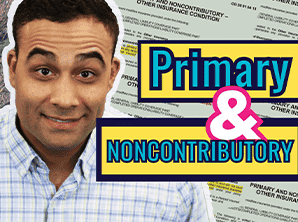Transcript
Working with vendors can be tricky business, and one of the most important documents you need to have on hand is the vendor's certificate of insurance. It's important to understand what this document is, what it means, and what you should be looking for when reading it. Let’s take a look at what details should be included in COIs and why they are so important. What is a Certificate of Insurance?
A certificate of insurance (COI) is a document that proves an individual or organization has insurance coverage in place. This document is usually requested by clients when they want confirmation that their vendors have adequate liability coverage. It contains key information about the insurance policy, including the type and amount of coverage, the limits of liability, who is covered under the policy, and any exclusions or restrictions.
Walkthrough Video 🎥
The information from your COI can help inform how much risk you are taking on when working with clients or customers. By understanding what type of policy has been purchased (general liability vs professional liability), what types of incidents it covers (property damage vs bodily injury), and associated limits (per incident vs aggregate limits), you can better assess whether or not this client is worth working with based on their level of risk management preparedness.
What Should I Look For?
When reading a COI, there are several key elements you should pay attention to: limits, additional insureds, who’s insured, endorsements/exclusions, and expiration date.
Limits: Limits refer to the maximum amount an insurance company will pay out for certain claims. When looking at limits on a COI document be sure to look at both bodily injury and property damage limits. That way you'll know exactly how much protection you have if something goes wrong while working with your vendor.
Additional Insureds: An additional insured is someone who has been added to an existing policy after it has already been issued by an insurer. A named insured may provide additional insured status to others because of a desire to protect the other party or to comply with a contractual agreement. Generally, a larger business will require that a smaller business add them or their people as additional insured.
For instance, A general contractor can protect themselves from potential lawsuits by requiring their subcontractors to add the GC to their professional liability insurance. This way, if issues arise in the future concerning a sub's workmanship and legal action is taken against them, they are able to utilize that particular plumber’s policy rather than draw on theirs.
Who Is Insured?
This section will tell you which party holds the policy—the vendor themselves or another entity such as their legal representative—and whether there are any other entities listed on the same policy besides them (like their parent company). Knowing this information helps confirm that your vendor does indeed have adequate coverage in place for all entities involved in providing their services to you as a client.
Endorsements/Exclusions: Endorsements are changes made to a policy after it has already been issued by an insurer; they can include details such as higher limits than what was originally offered or specific exclusions that could affect your level of risk exposure if something goes wrong while working with your vendor.
Exclusions are circumstances where no coverage will apply; sometimes these don’t appear on certificates but instead are detailed within the actual policy itself so be sure to ask for clarification if needed before signing off on anything related to working with your vendor’s services.
Expiration Date: The expiration date indicates when the policy expires and needs to be renewed by your vendor in order for them to continue providing services to you without interruption due to lack of coverage or inadequate protection against possible risks associated with their work activities during that time period.
Certificates of Insurance (COIs) provide vendors with important information about a client's insurance coverage and risk management practices which should always be reviewed before signing off on any agreements or projects. Taking the time to carefully review all elements included in a COI helps protect both parties involved in any given situation by providing assurance that everyone will be covered should something go wrong during or after the completion of their work together.
Ultimately, understanding how to read and use COIs helps ensure that both vendors and their clients remain protected at all times throughout their working relationship!
Become an insurance pro one lesson at a time!
Sign up for our free BCS Basics email course to get weekly lessons sent right to your inbox.



